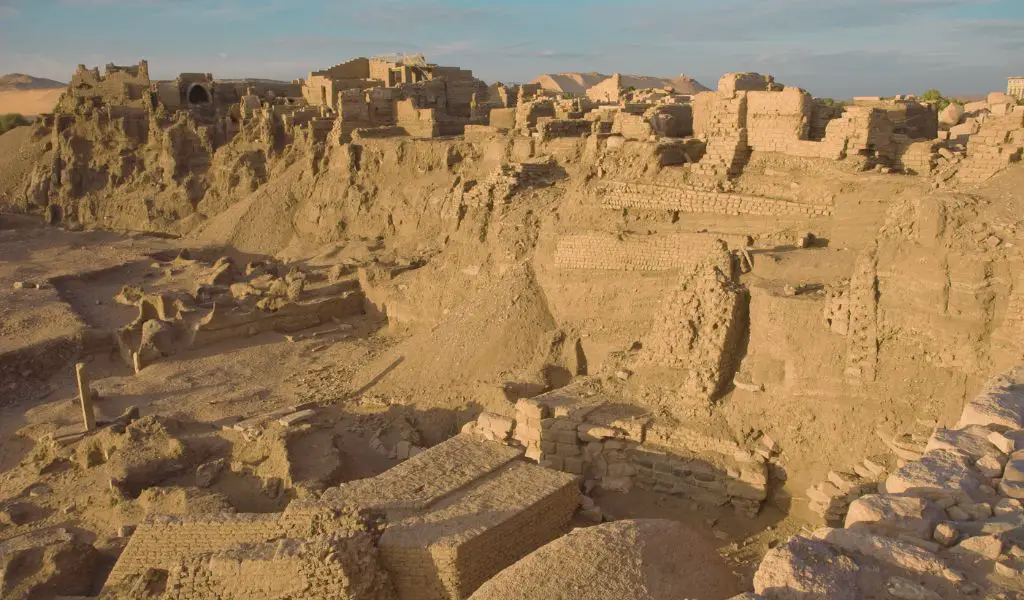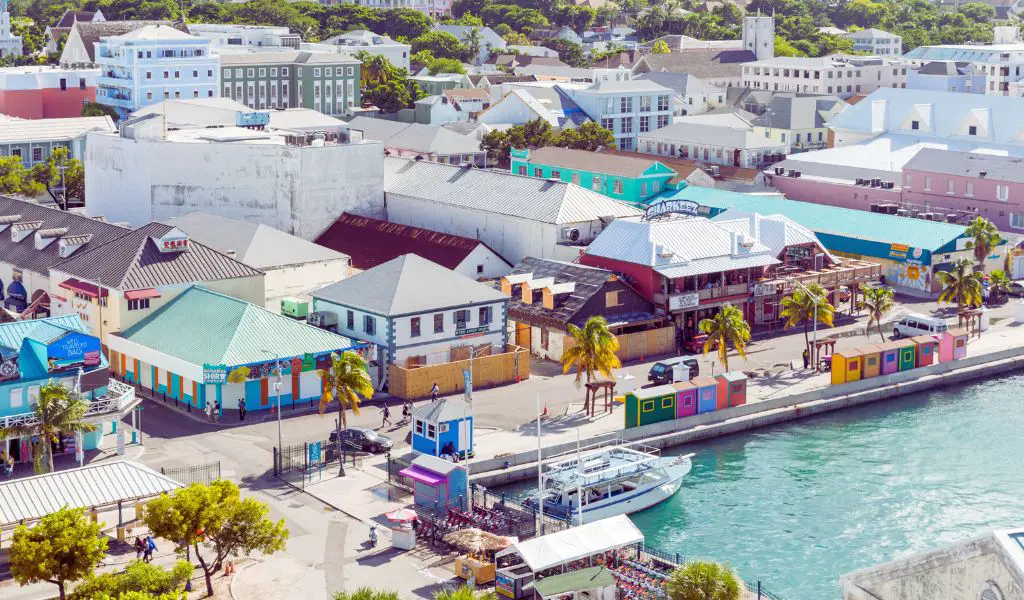Elephantine Island, located on the Nile, is an integral part of the city of Aswan in Upper Egypt. With a length of 1,200 meters (3,900 feet) from north to south and a width of 400 meters (1,300 feet) at its widest point, the island’s unique shape resembles that of an elephant tusk when viewed from above. Situated just downstream of the First Cataract, Elephantine Island marks the southern border between Upper Egypt and Lower Nubia. This region is called Upper Egypt because it is further up the Nile.
Ancient Egypt
In ancient times, Elephantine Island, served as a vital city on the border of Egypt and Nubia.
Its strategic location made it an excellent defensive site and a crucial hub for river trade.
Elephantine was also a significant religious center, as it was believed to be the dwelling place of Khnum, the ram-headed god of the cataracts. Khnum, along with the goddesses Satis and Anuket, formed the revered “Elephantine Triad.”
During the Second Intermediate Period (1650–1550 BC), Elephantine Island served as the southern border of Egypt.
It played a crucial role in the history of the Twelfth Dynasty, with Amenemhat I’s mother hailing from the Elephantine Egyptian nome Ta-Seti. Elephantine’s historical importance is further underscored by its association with the Tropic of Cancer, the northernmost latitude where the sun appears directly overhead at noon.
Archaeological Sites
Excavations conducted by the German Archaeological Institute have uncovered numerous artifacts on Elephantine Island, some of which are displayed in the Aswan Museum located on the island.
These archaeological findings offer a glimpse into prehistoric Egypt. Among the notable discoveries is the Elephantine Calendar of Things, dating back to the reign of Thutmose III during the Eighteenth Dynasty.
The island was also once a prominent stone quarry, providing granite for monuments and buildings across Egypt.
Sadly, two temples on the island, dedicated to Thutmose III and Amenhotep III, were destroyed in the 19th century during Muhammad Ali’s campaign to conquer Sudan.
Temples
One of the most significant temple complexes on Elephantine Island is the Temple of Khnum, situated at the southern tip of the island.
It houses ruins dating back to the Third Dynasty, including a granite step pyramid and a small temple built for the local Sixth Dynasty nomarch, Heqaib.
Over the centuries, many officials, such as Sarenput I and Heqaib III, dedicated statues and shrines within the temple.
Nilometers
Elephantine Island is home to two notable nilometers—structures used to measure the Nile River’s water level during the annual flood season.
The corridor nilometer, associated with the Temple of Satis, is one of the oldest in Egypt.
Its stone staircase descends into the corridor, and the inscriptions on its ninety steps are marked in Arabic, Roman, and hieroglyphic numerals.
The other nilometer, a rectangular basin near the Temple of Khnum, is likely the older of the two.
Jewish Presence
The Elephantine papyri and ostraca, legal documents and letters written in Imperial Aramaic, provide evidence of a community of Judean mercenaries and their families residing on Elephantine Island in the fifth century BC.
These Judean refugees had settled there following the destruction of Jerusalem in 587 BC.
They maintained their own temple, the House of Yahweh, alongside the worship of Khnum.
Unfortunately, the temple was destroyed in 410 BC at the urging of the priests of Khnum.
Other Features
In addition to its rich history and archaeological sites, Elephantine Island offers a few modern attractions.
The Aswan Museum, situated at the southern end of the island, exhibits various artifacts from the island’s ancient town.
Three Nubian villages are home to a sizable population on the island’s middle section. At the northern end of the island, visitors can find a large luxury hotel.
Adjacent to the island’s west side lies the Aswan Botanical Garden, located on el Nabatat Island.
Population
Elephantine Island has a sizable population of Nubians residing in three villages on the island’s middle section of around 3,000.
When to Go
Elephantine Island can be visited throughout the year, although it is advisable to avoid the hottest summer months (June to August) when temperatures can be scorching.
How to Get There
To reach Elephantine Island, visitors can take a boat or ferry from Aswan’s west bank, which is easily accessible from the city center.
Various tour operators offer guided excursions to the island.
Highlights
Temple of Khnum: Explore the ancient ruins of the Temple of Khnum, the oldest standing structure on Elephantine Island.
Aswan Museum: Discover the fascinating artifacts and exhibits showcasing the island’s rich history at the Aswan Museum.
Nilometers: Visit the corridor nilometer associated with the Temple of Satis and the rectangular basin near the Temple of Khnum to learn about the Nile’s water levels.
What You Should Know
Respect the historical sites and artifacts by adhering to any rules and regulations set by the authorities.
Stay hydrated and protect yourself from the sun, especially during the hot summer months.
Be mindful of the local culture and customs, dressing modestly and respecting the religious sites.
Consider hiring a knowledgeable guide or joining a guided tour to enhance your understanding and appreciation of the island’s history.
FAQs
Are there guided tours available on Elephantine Island?
Yes, various tour operators offer guided tours of Elephantine Island, providing insights into its history and attractions.
Can I visit the Aswan Museum on Elephantine Island?
Yes, the Aswan Museum is located on the southern end of Elephantine Island and houses a collection of artifacts from the island’s ancient town.
Are there accommodations available on Elephantine Island?
Yes, at the northern end of the island, there is a large luxury hotel where visitors can stay and enjoy the island’s unique atmosphere




